If you don’t have the time or inclination to produce your own, you can still get the benefits of homegrown strawberries: they’re organic, taste better than store-bought ones, and save you money since you don’t have to pay supermarket pricing. Flavonoids, antioxidants, and phytonutrients abound in this vitamin C-rich fruit, making it very beneficial to one’s health.
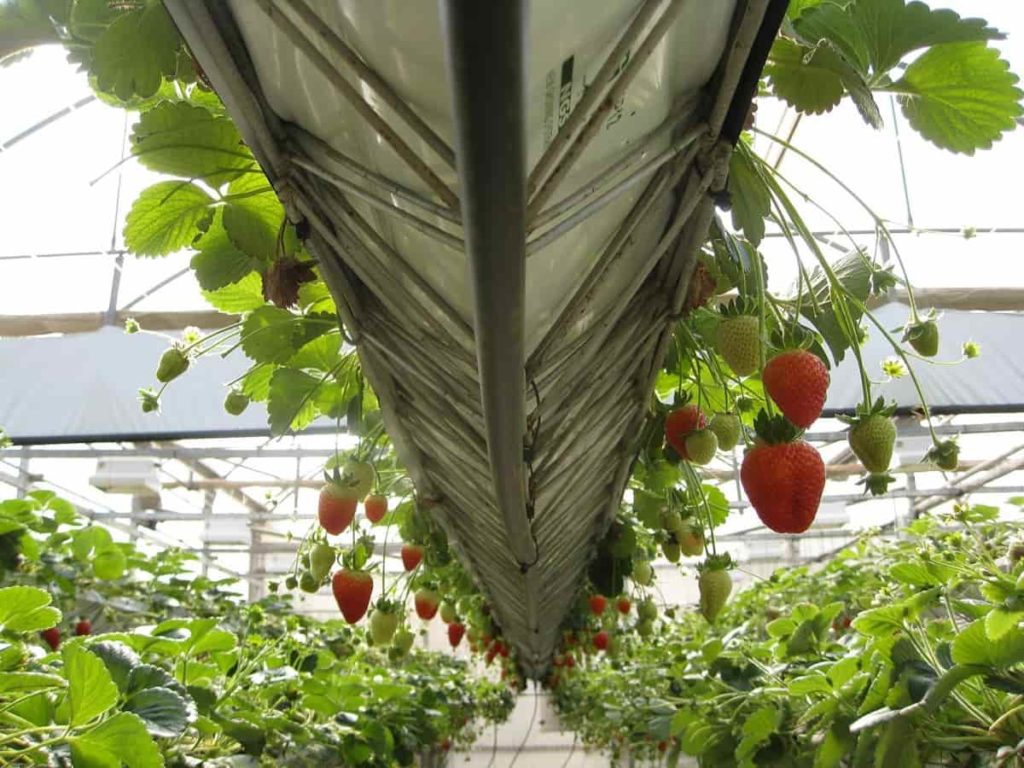
Low-maintenance and re-seedable in most places, they need little attention and are easy to grow. The plucking of strawberries is a favourite pastime for children. We will show you how easy it is to create your vertical strawberry planter with just a few household items. You might expect to find pesticide residue in strawberries bought at the supermarket. When you cultivate your food, you have complete control over what goes on your plants and, by extension, what goes into your body. This is a huge advantage.
What are the advantages of growing strawberries vertically?
- You can grow a lot of strawberry plants in a short area if you use a vertical gardening technique.
- Strawberries may be grown off the ground to protect them from insects and fungal infections and eliminate the need to weed.
- As a bonus, you don’t have to stoop down and pick up the leaves to get the ripe strawberries.
- Commercially cultivated strawberries have the greatest pesticide residue of all fruits and vegetables, according to the Environmental Working Group (EWG). As a result, your health should raise your pesticide-free strawberries in your backyard.
Growing Strawberries vertically from scratch
Choose an appropriate location
Strawberry plants may be planted in containers on your balcony, patio, or window box as previously stated. It’s possible to grow strawberries in a hanging basket or stackable planter if you don’t have a lot of room on the ground to work with.
Strawberry plants thrive best in full sunshine, but you may get by with less than a half-direct day’s sunlight if you’re willing to put in the effort. Avoid windy locations, which will keep pollination insects away from the blooms. You can grow Alpine strawberries in shadier areas if you’re willing to put in the time and effort, but they’ll reward you with excellent fruit.
Know your growing zone
Consider your growth zone and the desired hardiness of your plants before making a purchase. Most strawberry cultivars in zones 3-8 are perennial because they need a dormant period. Plants in containers, on average, have a colder winter than their ground-based counterparts. Because you’ll be growing them in pots, it’s a good idea to choose a berry that can withstand a harder winter.
In case you missed it: Top 20 Steps to Boost Strawberry Yield: How to Increase Strawberry Production
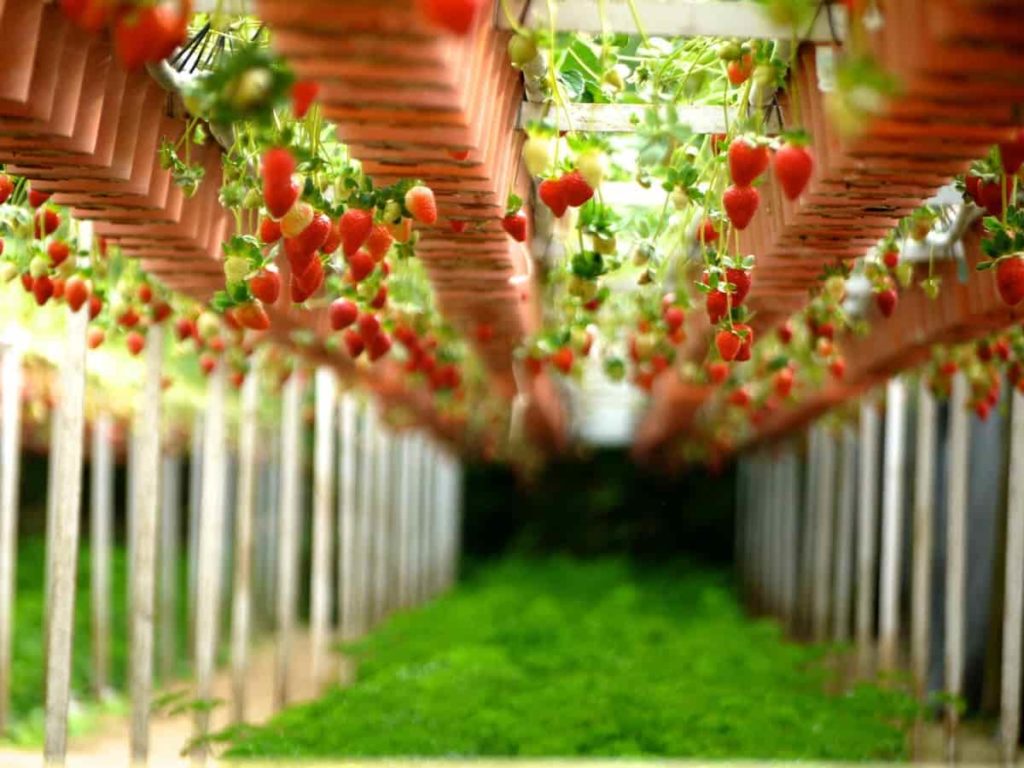
Choose a kind that can withstand temperatures as low as 3 or 4, for instance, if you live in zone 5. When growing strawberries, you’ll need an area that receives at least eight hours of direct sunlight every day for the best results.
Soil preparation
There will be strawberries in the planter for quite some time. Make sure you use a high-quality potting mix instead of a cheap one. Coconut coir, peat moss, perlite, vermiculite, compost, or worm castings may all be added to a light, fluffy mix. Garden soil, topsoil, and wood chips should be avoided while growing plants in containers. The pH of your soil can be checked with a metre a few times each year if you’re worried about the acidity of your mix. Strawberry plants should have a value of 5.5-6.8.
Use old containers or bottles
Fancy containers or dirt pots aren’t necessary at the start for growing strawberries vertically. Strawberry plants may even be grown in 2-liter plastic bottles, wooden crates, and even repurposed buckets, which can be kept one on top of another with space between them. You may use any kind of container, but ensure it has a depth of at least 12-14 inches to allow the roots of your plants to develop.
To enable plants to spread out horizontally, the number of plants you can place in a container will be determined by the container’s breadth. There are many unique benefits to raising strawberries in containers, whether they be buckets or tubs of any type. If you don’t want your plants to be eaten by slugs, you can relocate them around the garden so they can get more sunlight.
Planting strawberries in different vertical methods
Hanging bag planters
It is possible to grow strawberry plants vertically in this arrangement by drilling holes into a bag of potting mix and inserting strawberry plants into those holes. With a big bag, such as a woven plastic feed bag, you may construct your own grow bag or buy one. Use duct tape to reinforce 3- to 4-inch-diameter holes on the bag’s sidewalls approximately 12 inches apart. A potting mix should be used to fill the bag.
Fill the holes with strawberry transplants, covering the roots and allowing the top of the root to emerge slightly. To avoid congestion, tuck the runners into the earth as they grow or cut them off. Hang the bag in a location that gets direct sunlight and water the plants periodically to maintain moisture in the soil.
In case you missed it: How To Start Strawberry Gardening, Tips, Ideas
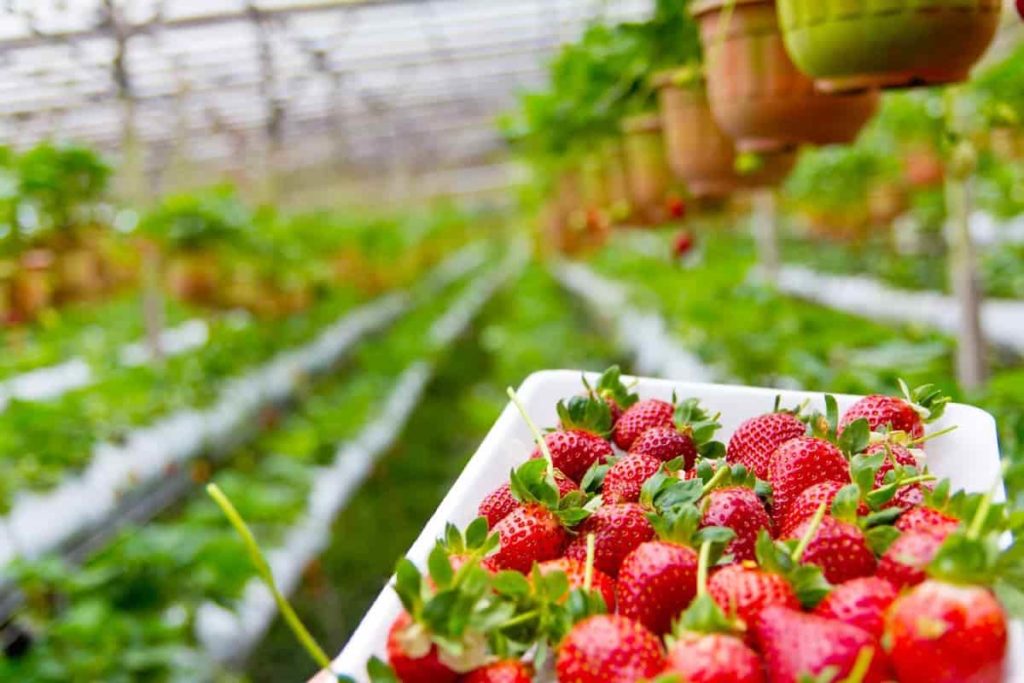
Stackable planters
If you want to grow strawberries vertically, you can buy stackable planters. Planters in the form of a rectangle or a cross may be found here. Sunlight reaches all plants in the stack by rotating each planter 45 degrees. Instead of purchasing this sort of equipment, you can build a vertical growth tower by stacking pots of decreasing size. In a 24-inch planter, fill the bottom with gravel, allowing about 8 to 10 inches of space at the top for the soil.
Make sure that the gravel bed in your 24-inch planter is filled with dirt before placing a 16-inch planter on top of it. Replicate using an 8″-wide planter in the 16″-wide planter to complete the look. Large containers should have 3 or 4 strawberry transplants, medium containers should have two or three, and tiny containers should have one. Strawberry plants overflow the container’s borders, providing a constant supply of fruit.
Rain gutter planters
Strawberries may be grown in rain gutters as a method to keep recycling efforts continuing and utilise vertical gardening space. It’s possible to establish a vertical growing system by attaching multiple pots to a fence or structure. Planters may be mounted directly to the side of your home if you have a tiny yard that gets a lot of sunlight. This will guarantee that the lower plants get adequate sunshine, which is essential for their health and well-being.
The bottom of the gutters should be drilled with 1/4-inch holes every 12 inches to ensure effective water drainage. The water from the top gutter flows down into the gutters below, ensuring that the soil remains wet. Strawberry plants should be planted every 12 inches, and runners should be tucked into the soil as they grow or pruned to prevent overcrowding, depending on your choice.
In case you missed it: Growing Strawberries In Greenhouse – In India
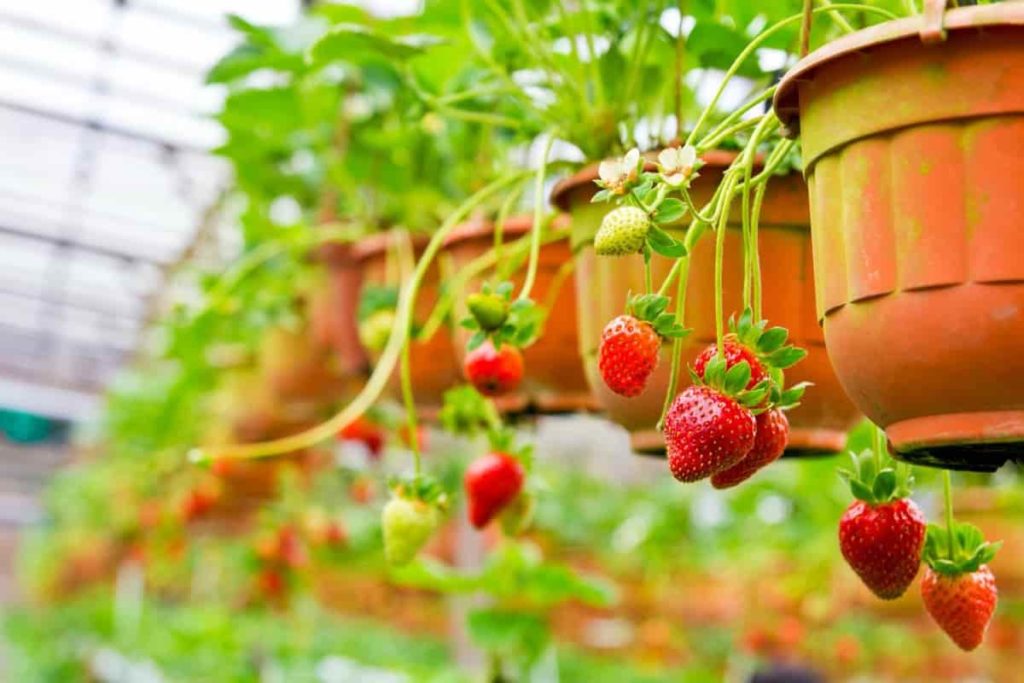
Barrel planters
Strawberry plants may be grown vertically in large wooden or plastic barrels. Drill three 3-inch holes approximately 12 to 14 inches apart on the barrel’s sides and many 3/4-inch holes in the barrel’s bottom to allow for drainage. It’s possible to lessen the quantity of potting soil required to fill a barrel by placing a 6-inch perforated drain tile in the middle of it.
It’s also possible to use a pipe to fill the barrel with water and allow it to gently drain into the soil as it dries, assuring that the plants’ roots are well-hydrated. Each hole and the top of the barrel should be filled with strawberry transplants; the plants will eventually cover the barrel.
Plant your strawberries in spring
To save money, prefer to buy plants in the bare root form. However, you may also purchase starter plants. When they first come, bare roots might be a bit unnerving since they seem to be dead. However, they quickly recover. Bare-root plants should be handled according to the directions included in the packaging. When it comes time to plant your seeds, the grower can advise you to keep them in the fridge or to use them within a specific time range.
Strawberry seeds should be avoided as they take longer to germinate and not everyone has the time to wait for sprouting. For the greatest results, put just one strawberry plant in each pocket. Still plenty of berries, but your plants will have the chance to develop into robust and healthy specimens. You may simply only plant a few strawberries and fill up the rest of the spaces with other kinds of plants, such as vegetables or herbs.
In case you missed it: Strawberry Farming Project Report, Cost, Profit Guide
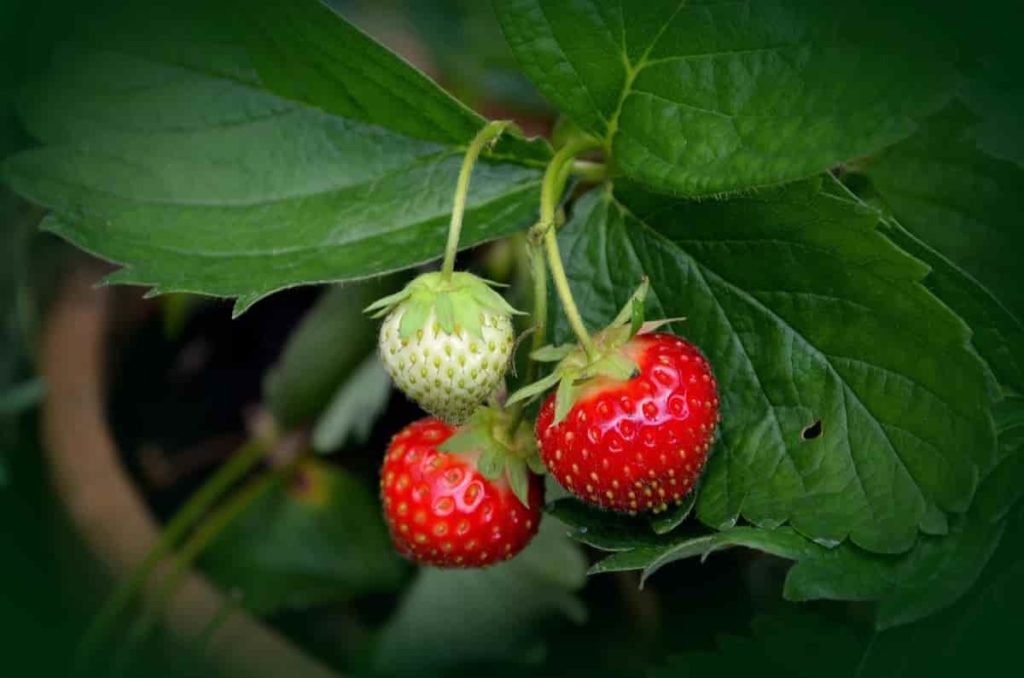
Be sure not to bury the crown
Strawberries are quite picky about the way they are planted, and this is no exception. Make careful to plant at or near the level of the crown, but not cover it. Only the roots should be buried. Due to the presence of a crown on both bare root and starter plants, attention should be maintained while planting.
Water your vertical strawberry garden
Strawberries don’t thrive well in soil that is always wet. Berry plants only need to be watered 1-3 times a week for the majority of gardeners. Keep in mind that you should let the soil dry out a little between watering sessions. When watering your plants, make sure the soil is completely saturated. It’s a good idea to check on your plants every day to see how much water they require, especially in the heat.
Deal with pests
You may have to deal with pests and plant diseases from time to time. Choosing a resistant type is the best way to avoid sickness. With perennials, it makes a significant impact. Because strawberries don’t need to be watered every day, they’re an easy target for overwatering, which is very dangerous. Normally use organic neem oil for bug management and a bird net cover to keep birds away from our maturing strawberries while dealing with pests.
Additional planting and caring information for your vertical strawberry garden
Smaller containers, such as 6- to 8-inch pots for a single plant, may be used to grow numerous strawberries, while bigger containers can be used for many plants. Hanging baskets and window boxes may also be used to cultivate them. “Strawberry jars” are also available, which are tall pots with several little pockets on the sides for the plants to rest in. It’s tough to water these containers, thus their outcomes are generally unsatisfactory.
In case you missed it: How To Grow Hydroponic Strawberries
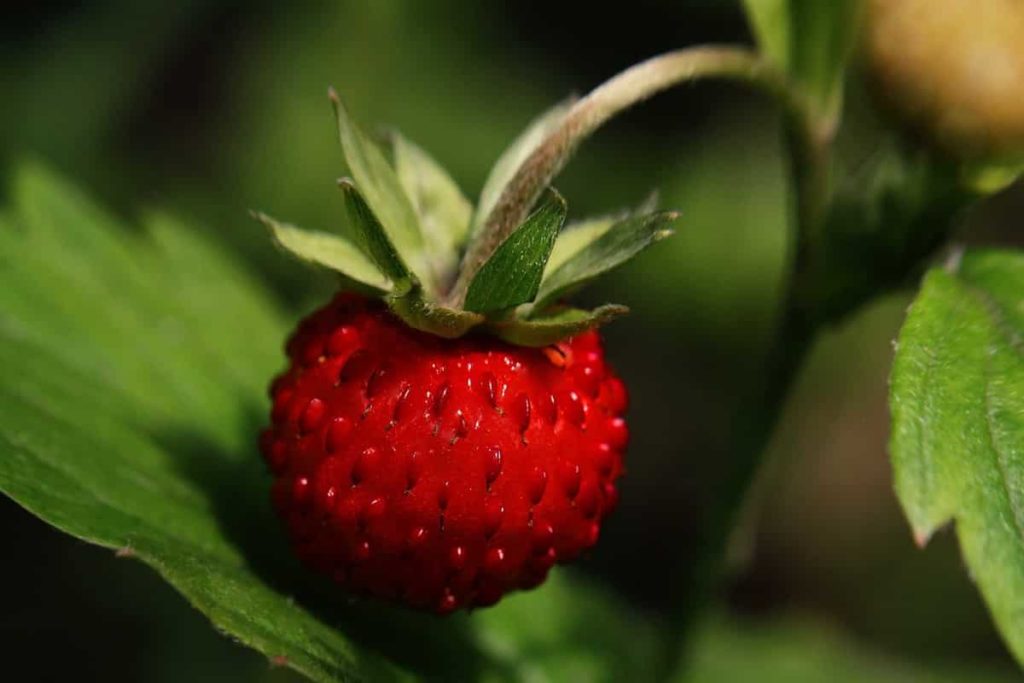
Incorporate soil-free potting mix into the container you’ve selected before adding the plants. Place the container in a location that receives at least 8 hours of direct sunlight each day, however, alpine strawberries may thrive with as little as six hours of direct sunlight per day. In the absence of rain, water the roots as necessary to maintain an equal moisture level. Strawberry plants need liquid fertiliser every 2 weeks or so from late spring to late summer. Follow the package recommendations for mixing the fertiliser.
Strawberries may often be left outside in a container throughout the winter and come back to life in the spring. However, hybrid varieties rapidly get overcrowded and cease to bear fruit. Ever-bearing or day-neutral varieties should be treated as annuals and replanted each spring to keep them fresh. Every 3 years or so, it’s a good idea to split the clumps of Alpine strawberries and transplant them into a new pot of potting soil in early to mid-spring.
- Economical Aquaculture: A Guide to Low-Budget Fish Farming
- 15 Common Planting Errors That Can Doom Your Fruit Trees
- How to Make Houseplants Bushy: Effective Tips and Ideas
- Innovative Strategies for Boosting Coconut Pollination and Yield
- Pollination Strategies for Maximum Pumpkin Yield
- The Complete Guide to Chicken Fattening: Strategies for Maximum Growth
- Natural Solutions for Tulip Problems: 100% Effective Remedies for Leaf and Bulb-Related Issues
- Revolutionizing Citrus Preservation: Towards a Healthier, Greener Future
- Natural Solutions for Peony Leaf and Flower Problems: 100% Effective Remedies
- Maximizing Profits with Avocado Contract Farming in India: A Comprehensive Guide
- Natural Solutions for Hydrangea Problems: 100% Effective Remedies for Leaf and Flowers
- The Ultimate Guide to Choosing the Perfect Foliage Friend: Bringing Life Indoors
- From Sunlight to Sustainability: 15 Ways to Use Solar Technology in Agriculture
- The Ultimate Guide to Dong Tao Chicken: Exploring from History to Raising
- The Eco-Friendly Makeover: How to Convert Your Unused Swimming Pool into a Fish Pond
- Mastering the Art of Delaware Chicken Farming: Essentials for Healthy Backyard Flocks
- 20 Best Homemade Fertilizers for Money Plant: DIY Recipes and Application Methods
- How to Craft a Comprehensive Free-Range Chicken Farming Business Plan
- Brighten Your Flock: Raising Easter Egger Chickens for Beauty and Bounty
- How to Optimize Your Poultry Egg Farm Business Plan with These Strategies
- Subsidy for Spirulina Cultivation: How Indian Government Schemes Encouraging Spirulina Farmers
- Ultimate Guide to Raising Dominique Chickens: Breeding, Feeding, Egg-Production, and Care
- Mastering the Art of Raising Jersey Giant Chickens: Care, Feeding, and More
- Ultimate Guide to Raising Legbar Chickens: Breeding, Farming Practices, Diet, Egg-Production
- How to Raise Welsummer Chickens: A Comprehensive Guide for Beginners
- How to Protect Indoor Plants in Winter: A Comprehensive Guide
- Ultimate Guide to Grow Bag Gardening: Tips, Tricks, and Planting Ideas for Urban Gardeners
- Guide to Lotus Cultivation: How to Propagate, Plant, Grow, Care, Cost, and Profit
- Agriculture Drone Subsidy Scheme: Government Kisan Subsidy, License, and How to Apply Online
- Ultimate Guide to Raising Araucana Chickens: Breed Profile, Farming Economics, Diet, and Care
- Bringing Hydroponics to Classroom: Importance, Benefits of Learning for School Students
- Ultimate Guide to Raising Polish Chickens: Breed Profile, Farming Economics, Diet, and Care
- Ultimate Guide to Raising Australorp Chickens: Profile, Farming Economics, Egg Production, Diet, and Care
- Silkie Chicken Farming: Raising Practices, Varieties, Egg Production, Diet, and Care
- Sussex Chicken Farming: Raising Practices, Varieties, Egg Production, Diet and Care
- Homemade Feed Formulations for Livestock: Discover Cost-effective Starter to Finisher Feed Recipes